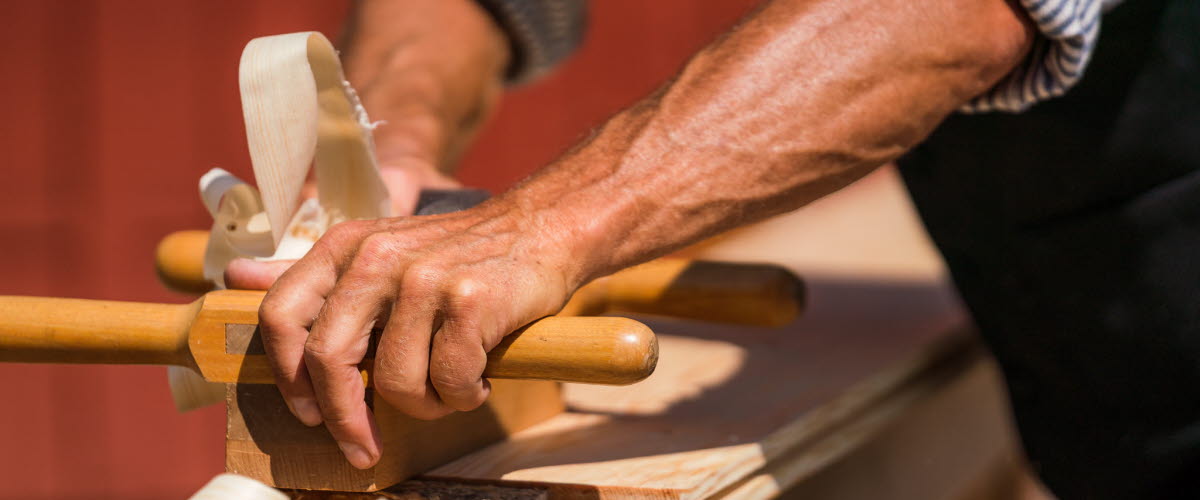Four hidden gems
Visit four hidden gems in the old town of Hjo.
Stadsgården and the old fire station – Regeringsgatan 6
Inside Stadsgården, you will find the old fire station and its tower. It is what’s known as a hose tower, and was previously used to hang fire hoses to dry them out. The building was also home to town meetings, the telegraph station, lending library and a police station and prison. As you enter the site from Regeringsgatan, take a look at the sign on the house about plastering, a method that became popular during the 18th century to raise the status of a timber house, while also increasing fire safety.
Storskolan and Skolbryggan – Sjögatan 1
Storskolan is a timber house with a facade of hand-planed wood, built in 1835. The building was previously a workhouse, a school, a grocer’s and a glazier’s shop, and is now a private home. Take a look at the colourful stairs that show off the building’s previous layers of paint. Skolbryggan, further along, is a place where women used to work their hands raw scrubbing cloths and linens. That’s over now though, and the jetty where you can wind down with an evening dip, is open to the general public.
Photographer: Jesper Anhede
“E.B. Ohlssons” – Stora Torget 9
This is an 18th century house with new panelling from the 1860s. The pink colour scheme came much later. During the 1880s, it was a drapery store. In 1911, the store was taken over by E.B. Ohlsson, and the store was run under this name until 2006. If you look carefully, you’ll notice the hipped roof, a style of roof brought up from southern Europe in the 18th century, where the gradient of the roof was a way of displaying your status.
Photographer: Visit Hjo
Kakelugnsmakargården – Hantverksgatan 1
As its name in Swedish suggests, this used to be the home of a stove-builder, Hjalmar Hallberg. He was one of Hjo’s many craftsmen during the 19th century. This timber house was built during the first half of the 19th century, when all of the building’s facades were covered in hand-planed panels. The easiest way of identifying whether a panel is hand-planed is by checking if the boards are different widths (with machine-made panels, the boards tend to be the exact same width).
Photographer: Visit Hjo












